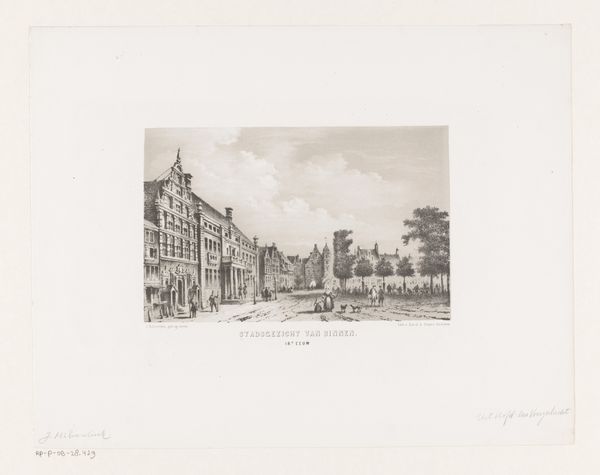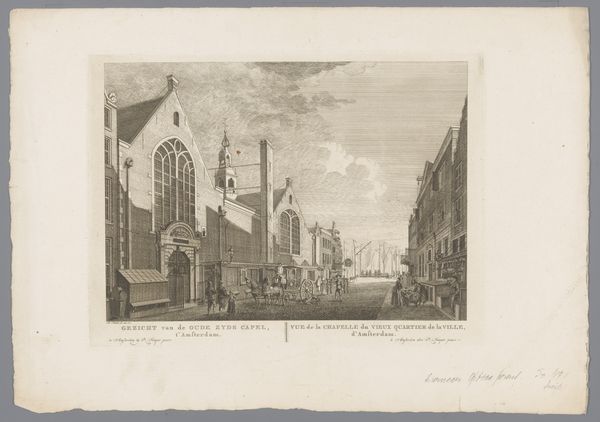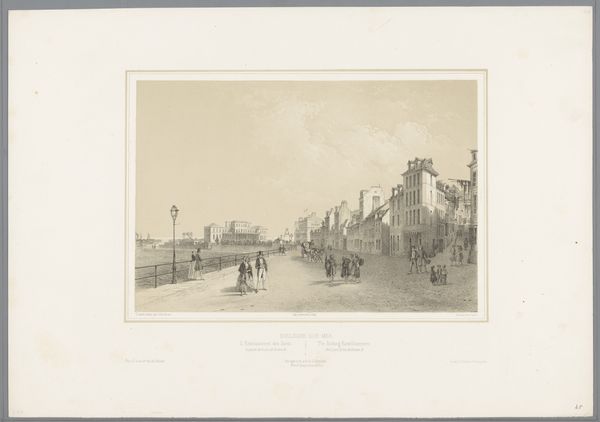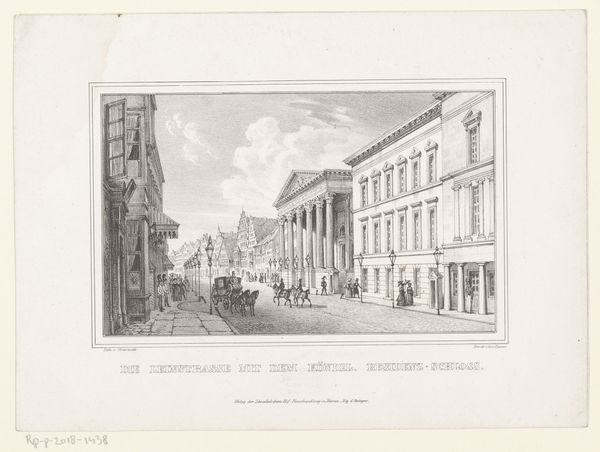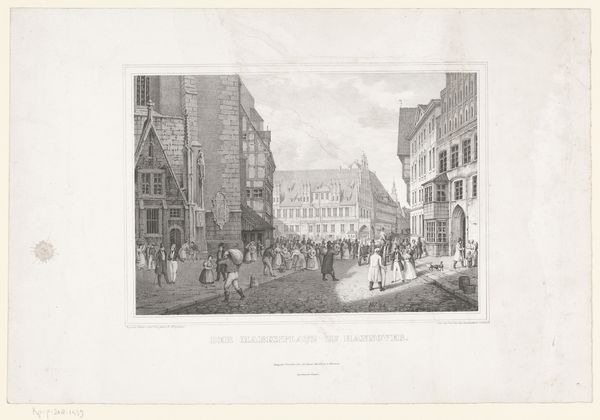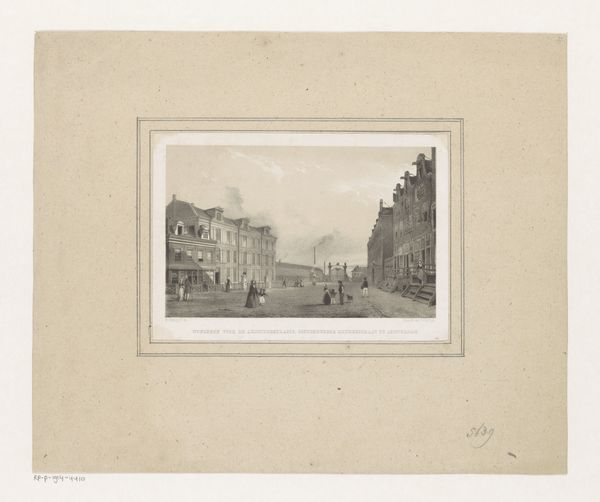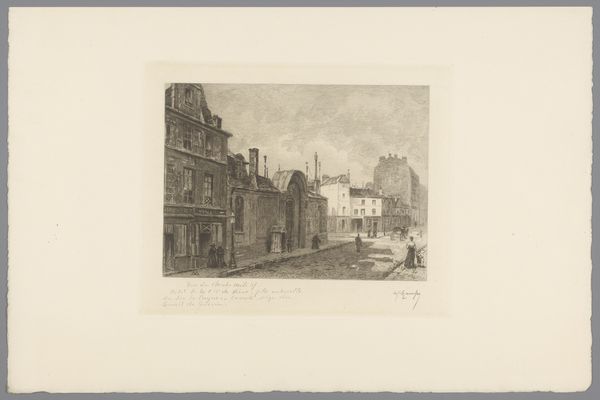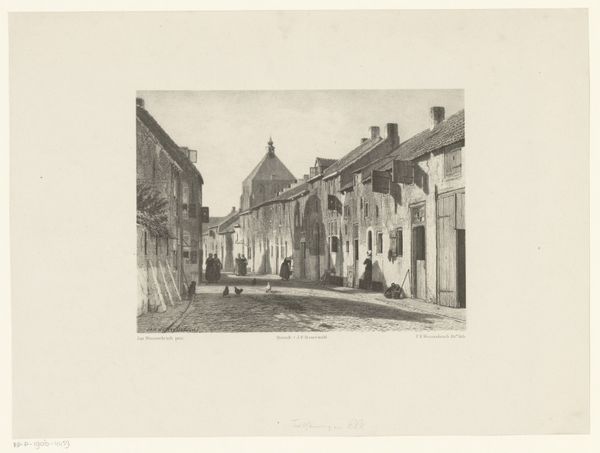
print, engraving
# print
#
pencil sketch
#
landscape
#
cityscape
#
engraving
#
realism
Dimensions: height 312 mm, width 448 mm
Copyright: Rijks Museum: Open Domain
Editor: This is "Zicht op de kerk Saint-Nicolas in Boulogne-sur-Mer," or "View of the Church Saint-Nicolas in Boulogne-sur-Mer" by Jean-Baptiste Arnout, made in 1847. It's a print – an engraving, actually. It reminds me of a meticulously rendered architectural drawing. What strikes you about it? Curator: Well, looking at this engraving, I am immediately drawn to consider the production process. Engraving in 1847 was a highly skilled craft, involving intense labor. Consider the sheer number of lines etched into the plate to create this scene. Who was Arnout? Was he the designer and the engraver or were these separate tasks carried out by different artisans in a workshop? The making is just as important as what’s depicted. Editor: That's fascinating. I was focused on the church itself and the city scene, but the labor involved is equally compelling. Do you think the choice of engraving affected the depiction of the social context shown in the artwork? Curator: Absolutely. Engraving, as a reproducible medium, meant this image could circulate widely, impacting how Boulogne-sur-Mer was perceived. Notice the precision, and how that renders the people. Do we see distinct individuals, or types representative of the social hierarchy? Think about how prints like this, reproduced and distributed, played a role in shaping ideas about place and class for a consuming audience. Editor: So, beyond just representing the church, it's about how this image functioned as a commodity and how the method of its creation influenced its message? Curator: Precisely. It prompts us to question what meanings were generated in its production, circulation, and consumption. Understanding this reveals layers beyond a simple city view. Editor: That gives me a totally different lens through which to view this piece. It's no longer just an image; it's a product of its time. Thank you for sharing these views! Curator: And it reminds us to always consider the material realities embedded in any artwork. It definitely deepens the discussion and our overall understanding.
Comments
No comments
Be the first to comment and join the conversation on the ultimate creative platform.
